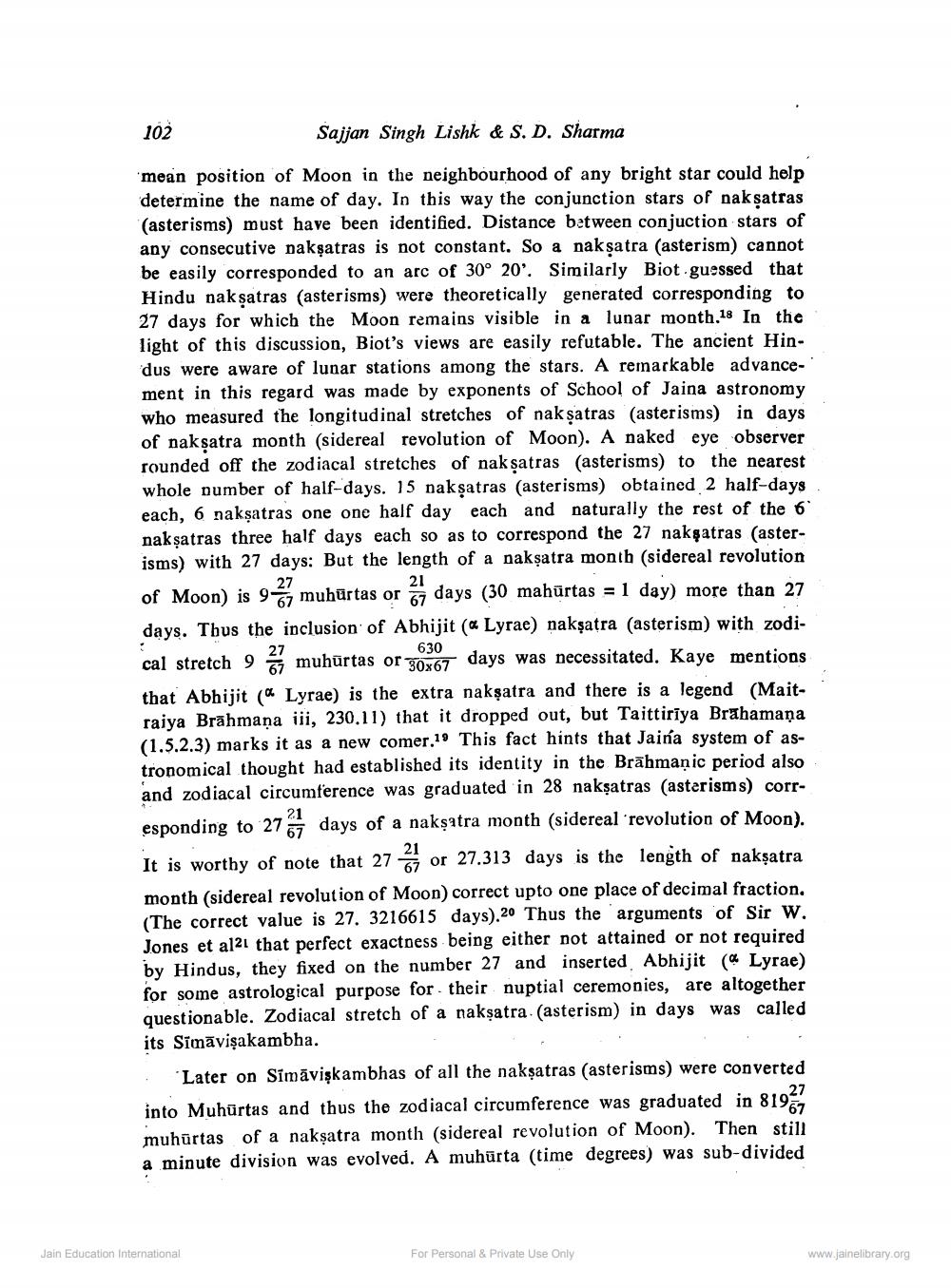________________
102
Sajjan Singh Lishk & S. D. Sharma
mean position of Moon in the neighbourhood of any bright star could help determine the name of day. In this way the conjunction stars of nakṣatras (asterisms) must have been identified. Distance between conjuction stars of any consecutive nakṣatras is not constant. So a nakṣatra (asterism) cannot be easily corresponded to an arc of 30° 20. Similarly Biot guessed that Hindu nakṣatras (asterisms) were theoretically generated corresponding to 27 days for which the Moon remains visible in a lunar month.18 In the light of this discussion, Biot's views are easily refutable. The ancient Hindus were aware of lunar stations among the stars. A remarkable advancement in this regard was made by exponents of School of Jaina astronomy who measured the longitudinal stretches of nakṣatras (asterisms) in days of nakṣatra month (sidereal revolution of Moon). A naked eye observer rounded off the zodiacal stretches of nakṣatras (asterisms) to the nearest whole number of half-days. 15 nakṣatras (asterisms) obtained 2 half-days. each, 6 nakṣatras one one half day each and naturally the rest of the 6 nakşatras three half days each so as to correspond the 27 nakṣatras (asterisms) with 27 days: But the length of a nakṣatra month (sidereal revolution of Moon) is 9-27 muhurtas or 2 days (30 mahūrtas = 1 day) more than 27 days. Thus the inclusion of Abhijit (a Lyrae) nakşatra (asterism) with zodi
21
27
21 67
cal stretch 9 muhurtas or 30367 days was necessitated. Kaye mentions that Abhijit ( Lyrae) is the extra nakṣatra and there is a legend (Maitraiya Brahmana iii, 230.11) that it dropped out, but Taittiriya Brahamana. (1.5.2.3) marks it as a new comer.19 This fact hints that Jaina system of astronomical thought had established its identity in the Brahmanic period also and zodiacal circumference was graduated in 28 nakṣatras (asterisms) corr esponding to 27 days of a nakṣatra month (sidereal revolution of Moon). It is worthy of note that 272 or 27.313 days is the length of nakṣatra month (sidereal revolution of Moon) correct upto one place of decimal fraction. (The correct value is 27. 3216615 days).20 Thus the arguments of Sir W. Jones et al21 that perfect exactness being either not attained or not required by Hindus, they fixed on the number 27 and inserted Abhijit ( Lyrae) for some astrological purpose for their nuptial ceremonies, are altogether. questionable. Zodiacal stretch of a nakṣatra (asterism) in days was called. its Sīmāviṣakambha.
Jain Education International
67
27
67
'Later on Simaviskambhas of all the nakṣatras (asterisms) were converted into Muhurtas and thus the zodiacal circumference was graduated in 819 muhurtas of a nakṣatra month (sidereal revolution of Moon). Then still a minute division was evolved. A muhurta (time degrees) was sub-divided
For Personal & Private Use Only
www.jainelibrary.org




